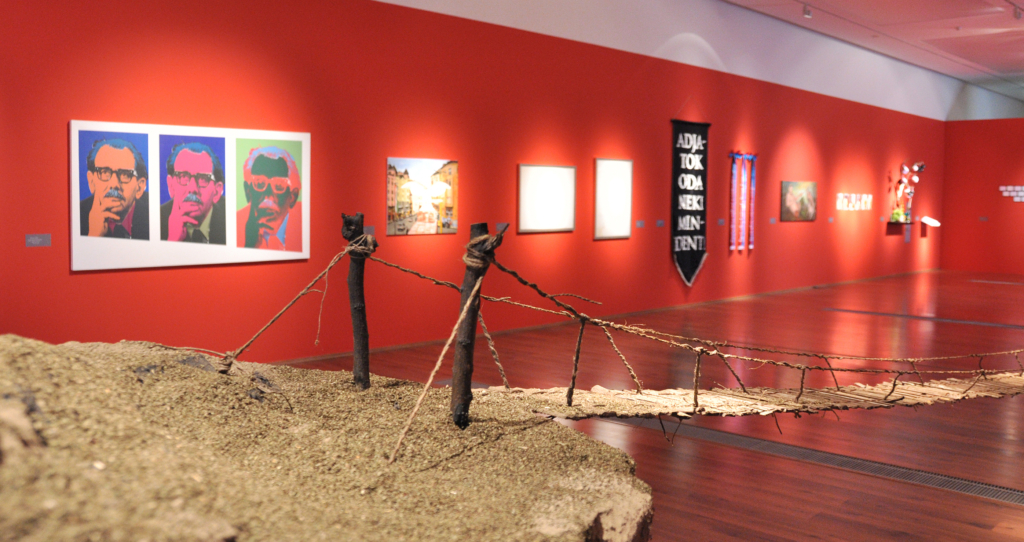Hibridity in the Carpathians – The Irokéz Collection and the Regime Change
2011. Sep. 11. - 2012. Jan. 01.

After the fall of the socialist party states, the populations of the territories occupied by Soviet troops faced a radically new situation. New political, economic, and cultural formations emerged on the foundations of the old systems. New parties, new capitalists, and new artistic endeavors emerged, consciously or subconsciously reflecting the transformation of social reality. This was a social reality in which peculiar hybrid phenomena arose from the ruins of the socialist infrastructure, which were surprisingly quickly taken over by domestic and international interest groups. Instead of the previous single, official culture, countless different cultures emerged, all trying to meet local needs and global expectations at the same time. Nationalist tendencies also grew stronger, while the former internationalist ideology was replaced by the cultural logic of global capitalism, which local cultural “workers” sought to tailor to Hungarian consumer habits, while the language itself was transformed by satellite channels, the Internet, and multinational companies.
New words, a new symbolic language, and a new capitalist reality resulted in exciting, hybrid cultural forms in the visual arts, which had to respond simultaneously to the expanding universe of technical images and the disappearance of previous, unambiguous cultural roles (official/alternative). As a result of this reaction, complex (ideologically and medially) “remix” works were created, many of which can be found in one of the largest private collections of the period, whose name evokes both an economic sector and a North American Indian tribe. Hungarian cultural studies, based on old dichotomies (East/West, socialism/capitalism, modern/postmodern), reacted relatively slowly to this complexity, with art history tending to continue using its old categories (abstract/figurative, realist/conceptual), while the works often operated and continue to operate on a completely different basis. It may well be that the logic of the works fits better with postcolonial cultural theories, which assume a constant mixing and interaction of different traditions and ideologies, than with traditional, stylistic ideas of representation and self-expression. Incidentally, within the culture intended for a wider audience, the viewership of Latin American and Hungarian soap operas also suggests that the theory of cultural hybridity developed for South American and Asian conditions could yield interesting results in the Carpathian region as well. Parallel to the theory of cultural hybridity, the 1980s also brought forth a new technological dimension, the world of digital media, in which the previously separate systems of words, images, and sounds became intertwined.
Curator: Hornyik Sándor
Artists: Ádám Zoltán, Batykó Róbert, Bodó Sándor, Braun András, Csáki László, Előd Ágnes, Farkas Gábor, Farkas Zsófia, Ferenczi Róbert, Gerber Pál, Gerhes Gábor, Halász Péter, Horváth Tibor, Karácsonyi László, Kaszás Tamás, Kis Róka Csaba, Komoróczky Tamás, Korodi János, Kovách Gergő, Loránt Anikó, Mátrai Erik, Nemes Csaba, Németh Hajnal, Péli Barna, Ravasz András, Roskó Gábor, Société Réaliste, SZAF, Szarka Péter, Szűcs Attila, Tarr Hajnalka, Tibor Zsolt, TNPU, Uglár Csaba, Varga Ferenc, Várnai Gyula
